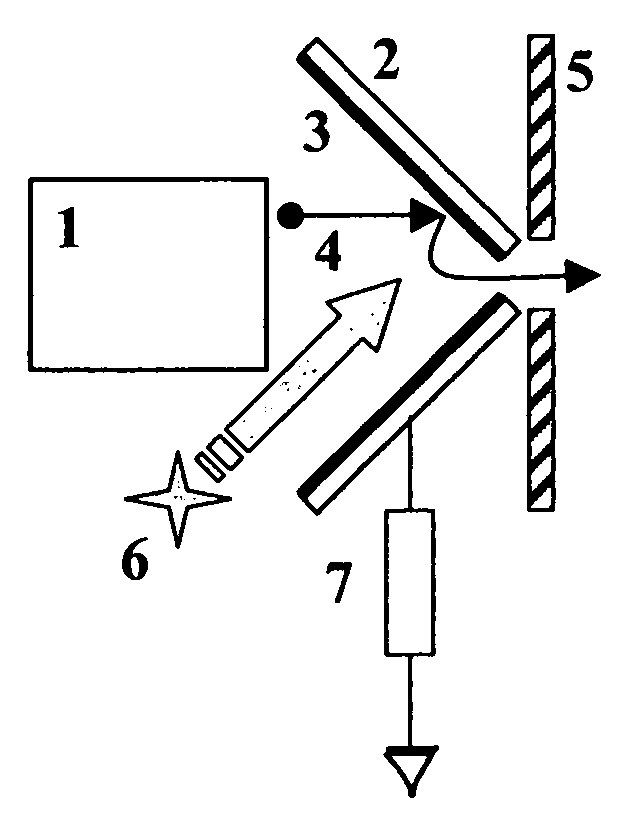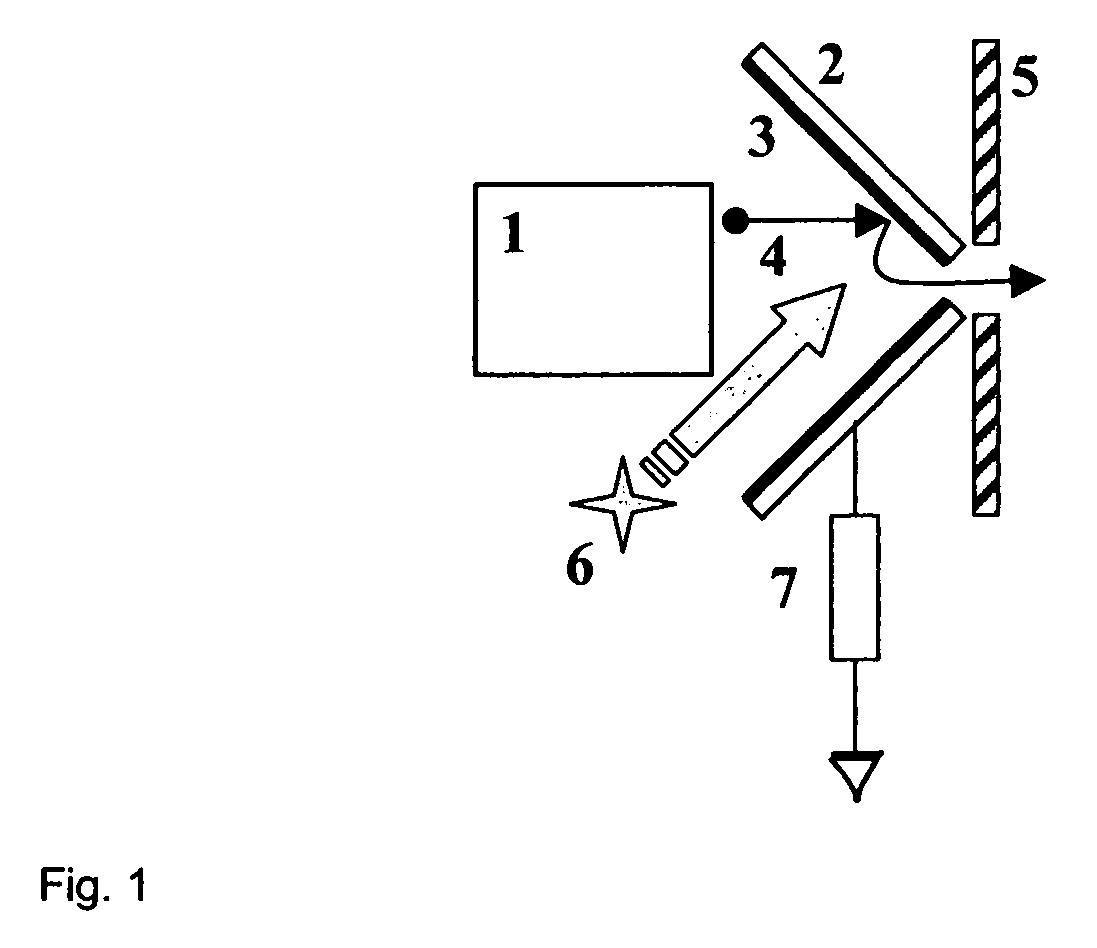Optical modulator of electron beam
a technology of electron beam and optical modulator, which is applied in the manufacture of electric discharge tubes/lamps, counting objects on conveyors, instruments, etc., can solve the problems of limited application range, low current density, and difficulty in achieving high frequency modulation of beams using this approach
- Summary
- Abstract
- Description
- Claims
- Application Information
AI Technical Summary
Benefits of technology
Problems solved by technology
Method used
Image
Examples
Embodiment Construction
[0007]Described is an electron source with an optically active electron concentration cavity, meaning that the cavity has a coating made of a semiconducting material that changes its electrical properties when irradiated by a light source. The property that changes under the influence of the light source is the conductivity of the coating. For example, if the coating is not irradiated by light, it has high electrical conductivity, and if it is irradiated by light it has low conductivity. Depending on the conductivity of the cavity, the electron transport to the cavity exit aperture changes. If the cavity is not irradiated by the light, the electrons will be transported to the aperture under the influence of an external electric field induced in such a way that electrons travel in the direction to the exit aperture. If the cavity is irradiated by a light source, the electrons will transport through the optically active coating to the conducting or semiconducting body of the cavity.
[0...
PUM
 Login to View More
Login to View More Abstract
Description
Claims
Application Information
 Login to View More
Login to View More - R&D
- Intellectual Property
- Life Sciences
- Materials
- Tech Scout
- Unparalleled Data Quality
- Higher Quality Content
- 60% Fewer Hallucinations
Browse by: Latest US Patents, China's latest patents, Technical Efficacy Thesaurus, Application Domain, Technology Topic, Popular Technical Reports.
© 2025 PatSnap. All rights reserved.Legal|Privacy policy|Modern Slavery Act Transparency Statement|Sitemap|About US| Contact US: help@patsnap.com


